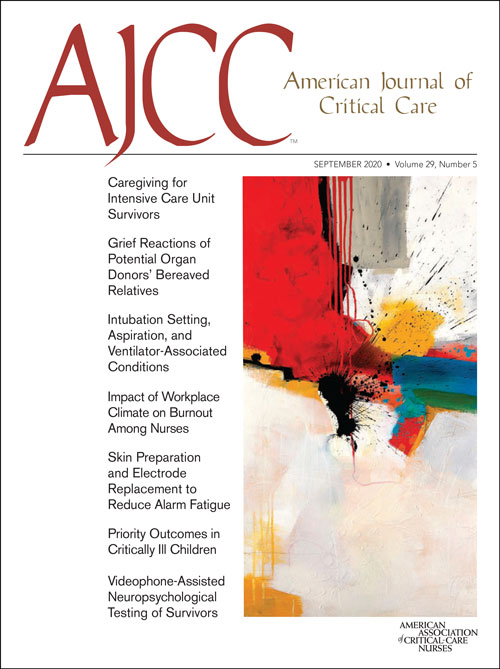In the survey, more than one-third of respondents reported burnout, with substantial variation across sites. In addition, perceptions of the local workplace climate was the strongest predictor of burnout, surpassing individual and other organization-level factors.
Many organizations pursue burnout interventions that emphasize building resilience at the individual clinician level. In contrast, “Impact of Workplace Climate on Burnout Among Critical Care Nurses in the Veterans Health Administration” indicates that approach should also focus on improving the overall work environment. The study is published in the September issue of American Journal of Critical Care (AJCC).
The Center for Healthcare Organization and Implementation Research (CHOIR) at Veterans Administration (VA) Boston Healthcare System conducted the study. Co-author Lakshmana Swamy, MD, MBA, is a pulmonary and critical care fellow at Boston Medical Center and VA Boston Healthcare System.
“In the ICU, relationships with patients, colleagues, supervisors and senior leaders can all influence clinician well-being,” Swamy said. “Interventions to promote nurse well-being need to consider systemic changes that affect diverse components of workplace climate.”
Each year, the VA conducts a national all-employee survey (AES), which includes questions related to feelings of burnout, as well as local workplace climate and organization-level characteristics. The researchers filtered AES responses from 2016 and 2017 to include only registered nurses who self-reported their primary service area as “intensive care unit-critical care.” The study findings are based on data from a 2017 survey of 2,352 critical care nurses from 94 sites, as well as 2016 survey data on workplace climate from 2,191 critical care nurses.
Overall, one-third of respondents reported burnout, which mirrors other studies that have found a high prevalence of burnout among critical care nurses.
Burnout levels varied significantly across sites, with workplace climate being a stronger predictor than any other site-level factor.
In the secondary analysis of the data, the researchers examined several aspects of workplace climate: perceptions of teamwork, patient experience, workload, supervisors and senior leadership. All five elements were found to be individually significant, representing a potentially important contributing factor to burnout.
The research initiative was supported in part by an unrestricted grant from the American Thoracic Society Foundation and in part by resources from Edith Nourse Rogers Memorial Veterans Hospital and VA Boston Healthcare System.
The study adds to the growing body of knowledge that reinforces the importance of a healthy work environment (HWE) to clinician well-being.
As part of its unwavering commitment to improve the environments where nurses work, the American Association of Critical-Care Nurses (AACN) offers additional resources related to HWEs, including research published in its journals and continuing education materials.
The AACN Healthy Work Environment Team Assessment is also available to help organizations align quality and safety improvement efforts with the HWE standards. Healthcare professionals can use the free online tool to survey staff, compare their results with industry standards and develop step-by-step strategies to improve performance, patient safety, staff recruitment and retention, and their workplace environment.
To access the article and full-text PDF, visit the AJCC website at www.ajcconline.org.
About the American Journal of Critical Care: The American Journal of Critical Care (AJCC), a bimonthly scientific journal published by the American Association of Critical-Care Nurses, provides leading-edge clinical research that focuses on evidence-based-practice applications. Established in 1992, the award-winning journal includes clinical and research studies, case reports, editorials and commentaries. AJCC enjoys a circulation of more than 120,000 acute and critical care nurses and can be accessed at www.ajcconline.org.
About the American Association of Critical-Care Nurses: For more than 50 years, the American Association of Critical-Care Nurses (AACN) has been dedicated to acute and critical care nursing excellence. The organization’s vision is to create a healthcare system driven by the needs of patients and their families in which acute and critical care nurses make their optimal contribution. AACN is the world’s largest specialty nursing organization, with more than 125,000 members and over 200 chapters in the United States.
American Association of Critical-Care Nurses, 27071 Aliso Creek Road, Aliso Viejo, CA 92656; 949-362-2000; www.aacn.org; facebook.com/aacnface; twitter.com/aacnme


